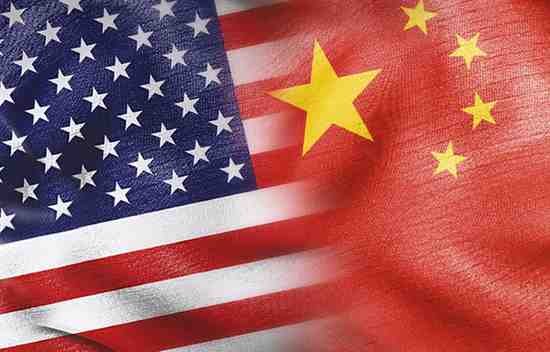Trump’s Dealmaking Diplomacy Faces Renewed Strain
President Donald Trump’s signature approach of one-on-one “dealmaking diplomacy” is showing renewed cracks as tensions between the United States and China escalate. After months of relative calm following a 90-day truce, Beijing’s announcement of fresh export controls on rare earth elements has thrust the two largest economies back toward confrontation — and markets are already feeling the shock.
China’s Ministry of Commerce late Wednesday imposed sweeping restrictions on the export of rare earths and other key minerals essential to US defense and technology sectors. While initial reactions were muted, the situation quickly intensified after Trump responded with an aggressive post on Truth Social threatening “a massive increase” in tariffs on Chinese goods. By Friday afternoon, major US stock indexes were in free fall, suffering their steepest losses in six months.
Markets Rattle After Trump’s Tariff Threat
The president’s 500-word social media statement warned that unless China reversed its export restrictions, the US would impose an additional 100% tariff beginning November 1. This escalation, Trump said, was aimed at defending American industry and forcing Beijing to the negotiating table. But traders saw it differently — as a sign that the fragile peace between the two powers was collapsing once again.
Wall Street’s fear gauge, the VIX index, spiked to its highest level since April. Tech stocks were particularly hard hit, with Nvidia Corp. — a critical player caught in the semiconductor tug-of-war — tumbling nearly 5%. “Today was a wake-up call,” said Dan White, head of research at Blue Creek Capital. “Markets had priced in stability, but the reality is a lot of uncertainty remains.”
The Collapse of a Short-Lived Truce
In May, Trump negotiated a 90-day truce with Beijing, temporarily halting the implementation of new tariffs and export controls that both sides had threatened earlier in the year. China, in turn, agreed to lift its ban on critical mineral exports, easing pressure on US manufacturing sectors.
However, as months passed, the truce began to unravel. Chinese purchases of American soybeans — a key component of the deal and politically vital for Trump’s farm-state base — slowed dramatically. The White House called the slowdown a “negotiating tactic,” while promising an aid package for farmers. Yet Beijing’s new restrictions this week signaled that the fragile peace was over.
“The Chinese saw the leverage they gained through export controls earlier this year,” said Jon Hillman, a senior fellow at the Council on Foreign Relations. “It’s not surprising they’re using it again to tilt the next round of negotiations.”
Beijing’s Growing Confidence and US Risks
The upcoming meeting between Trump and Chinese President Xi Jinping in South Korea was expected to finalize a broader trade framework. But following the latest escalation, Trump hinted he might skip the summit altogether. Experts believe both sides are posturing ahead of talks — but with vastly different levels of leverage.
“China today is far more self-reliant, assertive, and less dependent on the US than during Trump 1.0,” noted Wendy Cutler, vice president at the Asia Society Policy Institute. “The past 24 hours make it clear those earlier dynamics are gone.”
Former US trade officials share that concern. Nazak Nikakhtar, a former Commerce Department official, warned that Beijing’s control over critical resources gives it a potent bargaining chip. “If you rely on handshake deals, you’re vulnerable,” she said. “The other side will test how you respond when they walk back commitments — and if you blink, they’ll keep pushing.”
A Warning Sign for Trump’s Dealmaking Strategy
The renewed trade clash underscores the limitations of Trump’s bilateral approach. While his “deal by deal” strategy often produces short-term wins or market optimism, those same deals tend to unravel quickly without broader multilateral backing.
Cutler, who spent decades negotiating at the US Trade Representative’s office, cautioned that the US fares better when working with allies to counter major economies like China. “Collective responses create real pressure,” she said. “One-on-one deals only go so far before they start to fracture.”
For now, markets and policymakers alike are bracing for another round of economic turbulence. As the United States and China prepare for what could be another defining chapter in their trade rivalry, one thing is clear: Trump’s self-styled “art of the deal” faces its toughest test yet.








